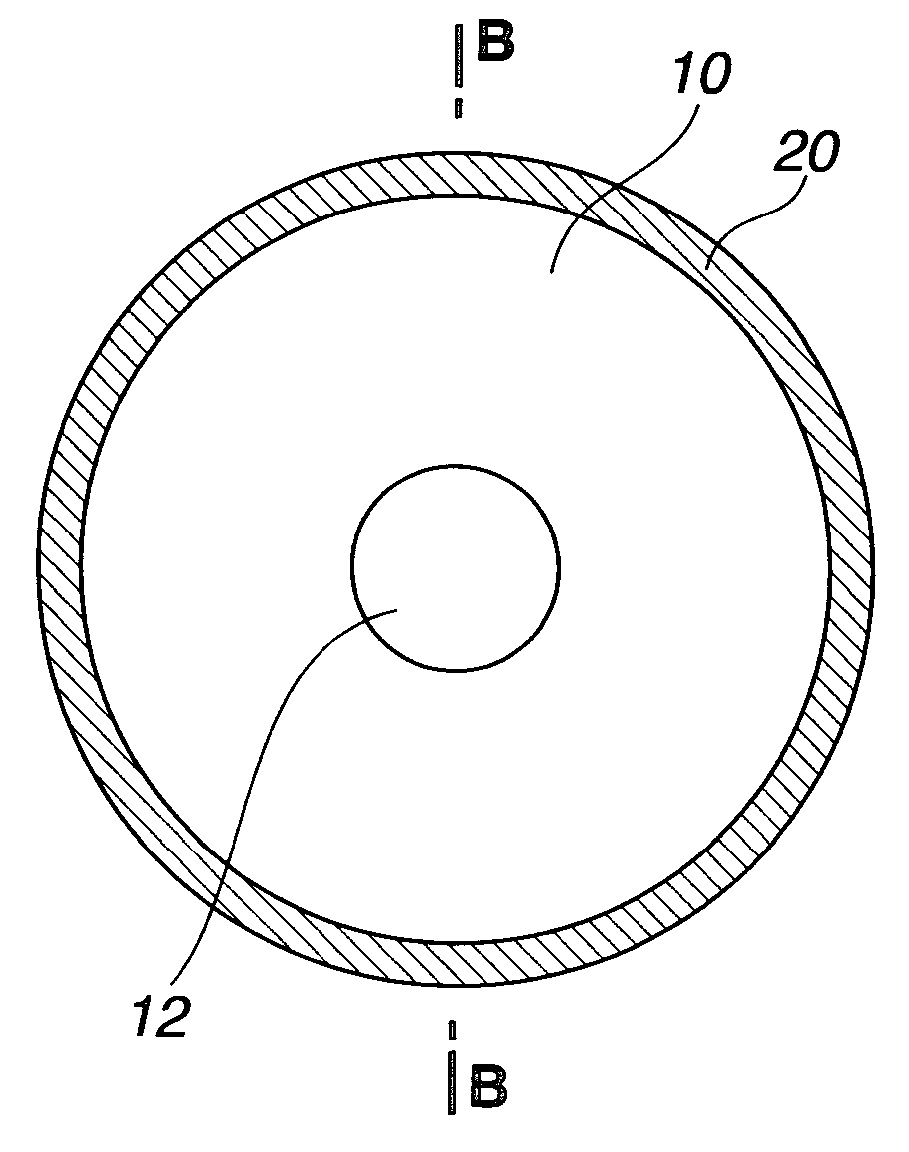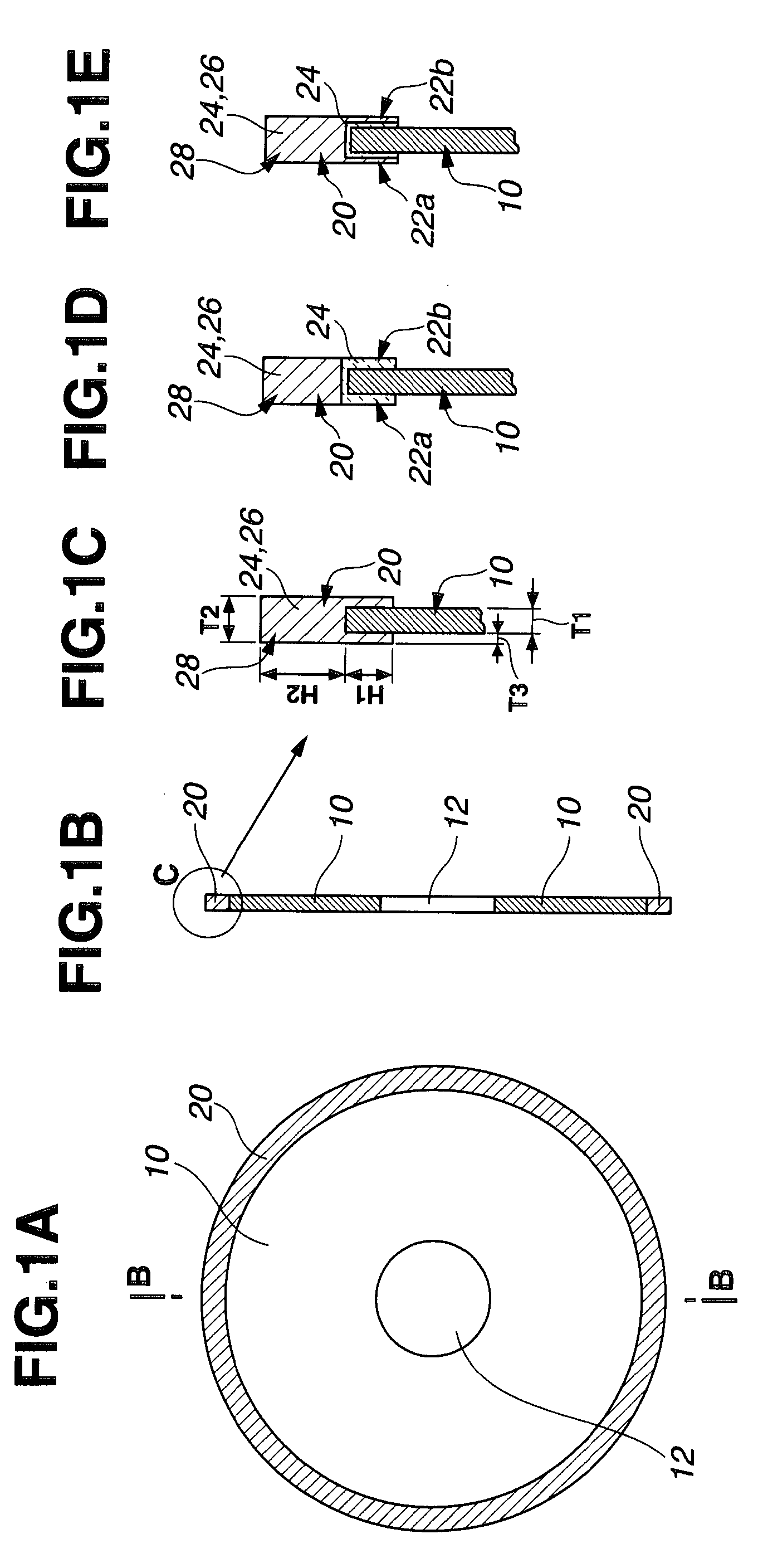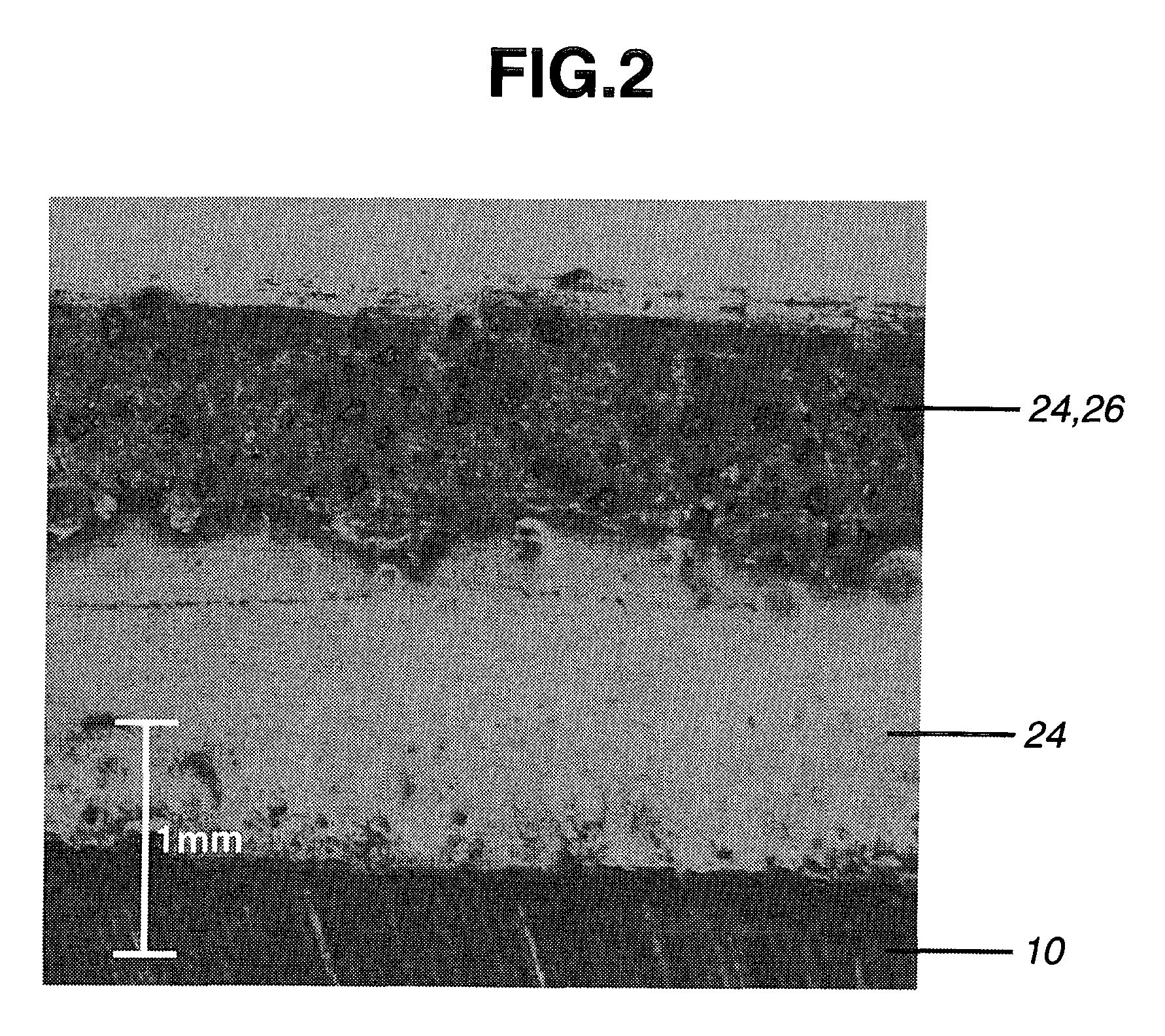Outer blade cutting wheel and making method
a cutting wheel and outer blade technology, applied in the direction of gear teeth, gear-teeth manufacturing apparatus, other chemical processes, etc., can solve the problems of imposing an ever increasing demand, and achieve the effects of improving the mechanical nature of the bond used in the blade section, enhancing the overall mechanical strength of the outer blade cutting wheel, and excellent mechanical strength
- Summary
- Abstract
- Description
- Claims
- Application Information
AI Technical Summary
Benefits of technology
Problems solved by technology
Method used
Image
Examples
example 1
[0076]A cemented carbide consisting of 90 wt % WC and 10 wt % Co was machined into an annular thin disc having an outer diameter of 125 mm, an inner diameter of 40 mm, and a thickness of 0.3 mm, which served as a base. The base was masked with adhesive tape so that only a circumferential region of either surface extending 1.5 mm inward from the outer periphery was exposed. The base was immersed in a commercially available aqueous alkaline solution at 40° C. for 10 minutes for degreasing, washed with water, and immersed in an aqueous solution of 30 to 80 g / L of sodium pyrophosphate at 50° C. where electrolysis was effected at a current density of 2 to 8 A / dm2. The cemented carbide base was ultrasonic washed in deionized water and held by a jig for plating. In accordance with method (iv) mentioned above, nickel-clad diamond grains having an average particle size of 130 μm were disposed in contact with the periphery of the base. The base was immersed in a nickel sulfamate plating bath ...
example 2
[0077]A cemented carbide consisting of 90 wt % WC and 10 wt % Co was machined into an annular thin disc having an outer diameter of 125 mm, an inner diameter of 40 mm, and a thickness of 0.3 mm, which served as a base. The base was masked with adhesive tape so that only a circumferential region of either surface extending 1.5 mm inward from the outer periphery was exposed. The base was immersed in a commercially available aqueous alkaline solution at 40° C. for 10 minutes for degreasing, washed with water, and immersed in an aqueous solution of 30 to 80 g / L of sodium pyrophosphate at 50° C. where electrolysis was effected at a current density of 2 to 8 A / dm2. The cemented carbide base was ultrasonic washed in deionized water and held by a jig for plating. In accordance with method (iv) mentioned above, nickel-clad CBN grains having an average particle size of 130 μm were disposed in contact with the periphery of the base. The base was immersed in a nickel sulfamate plating bath at 5...
example 3
[0078]A cemented carbide consisting of 90 wt % WC and 10 wt % Co was machined into an annular thin disc having an outer diameter of 125 mm, an inner diameter of 40 mm, and a thickness of 0.3 mm, which served as a base. The base was masked with adhesive tape so that only a circumferential region of either surface extending 1.5 mm inward from the outer periphery was exposed. The base was immersed in a commercially available aqueous alkaline solution at 40° C. for 10 minutes for degreasing, washed with water, and immersed in an aqueous solution of 30 to 80 g / L of sodium pyrophosphate at 50° C. where electrolysis was effected at a current density of 2 to 8 A / dm2. The cemented carbide base was ultrasonic washed in deionized water and held by a jig for plating. As in Example 1, nickel-clad diamond grains having an average particle size of 130 μm were disposed in contact with the periphery of the base. The base was immersed in a nickel-cobalt alloy sulfamate plating bath at 50° C. where el...
PUM
| Property | Measurement | Unit |
|---|---|---|
| Pressure | aaaaa | aaaaa |
| Pressure | aaaaa | aaaaa |
| Pressure | aaaaa | aaaaa |
Abstract
Description
Claims
Application Information
 Login to View More
Login to View More - R&D
- Intellectual Property
- Life Sciences
- Materials
- Tech Scout
- Unparalleled Data Quality
- Higher Quality Content
- 60% Fewer Hallucinations
Browse by: Latest US Patents, China's latest patents, Technical Efficacy Thesaurus, Application Domain, Technology Topic, Popular Technical Reports.
© 2025 PatSnap. All rights reserved.Legal|Privacy policy|Modern Slavery Act Transparency Statement|Sitemap|About US| Contact US: help@patsnap.com



